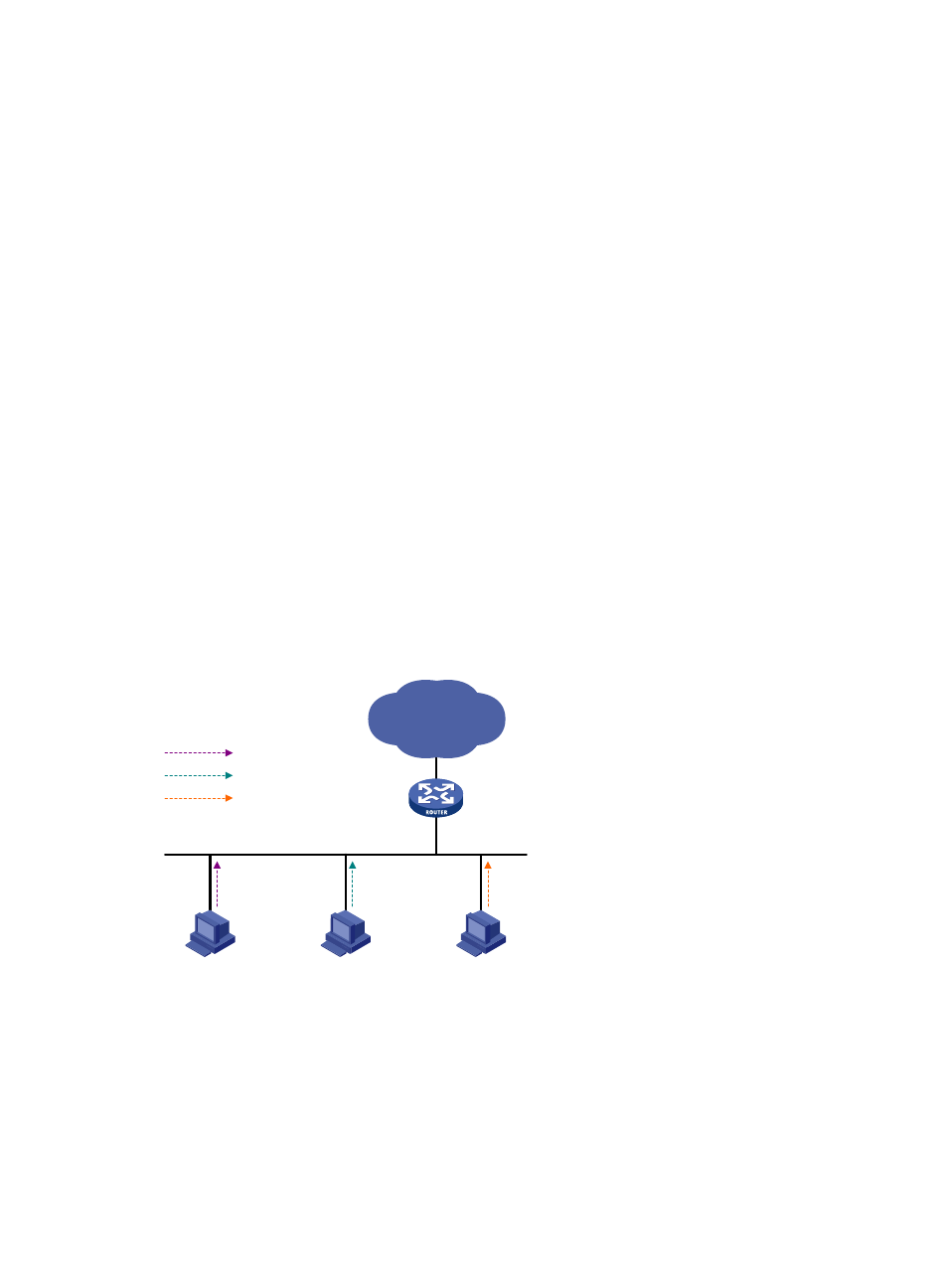Igmp ssm mapping – H3C Technologies H3C S10500 Series Switches User Manual
Page 116

101
•
TO_IN—The filtering mode has changed from Exclude to Include.
•
TO_EX—The filtering mode has changed from Include to Exclude.
•
ALLOW—The Source Address fields in this group record contain a list of the additional sources that
the system wants to obtain data from, for packets sent to the specified multicast address. If the
change was to an Include source list, these sources are the addresses that were added to the list. If
the change was to an Exclude source list, these sources are the addresses that were deleted from the
list.
•
BLOCK—The Source Address fields in this group record contain a list of the sources that the system
no longer wants to obtain data from, for packets sent to the specified multicast address. If the
change was to an Include source list, these sources are the addresses that were deleted from the list.
If the change was to an Exclude source list, these sources are the addresses that were added to the
list.
IGMP SSM mapping
The IGMP SSM mapping feature enables you to configure static IGMP SSM mappings on the last-hop
router to provide SSM support for receiver hosts that are running IGMPv1 or IGMPv2. The SSM model
assumes that the last-hop router has identified the desired multicast sources when receivers join multicast
groups.
•
When a host that is running IGMPv3 joins a multicast group, it can explicitly specify one or more
multicast sources in its IGMPv3 report.
•
A host that is running IGMPv1 or IGMPv2, however, cannot specify multicast source addresses in its
report. In this case, you must configure the IGMP SSM mapping feature to translate the (*, G)
information in the IGMPv1 or IGMPv2 report into (G, INCLUDE, (S1, S2...)) information.
Figure 35 Network diagram for IGMP SSM mapping
SSM
IGMPv1 report
IGMPv2 report
IGMPv3 report
Router A
Querier
Host A (IGMPv1)
Host B (IGMPv2)
Host C (IGMPv3)
Receiver
Receiver
Receiver
As shown in
, on an SSM network, Host A, Host B, and Host C are running IGMPv1, IGMPv2,
and IGMPv3 respectively. To provide SSM service for all the hosts if IGMPv3 is not available on Host A
and Host B, you must configure the IGMP SSM mapping feature on Router A.
With the IGMP SSM mapping feature configured, when Router A receives an IGMPv1 or IGMPv2 report,
it checks the multicast group address G carried in the message and does the following:
